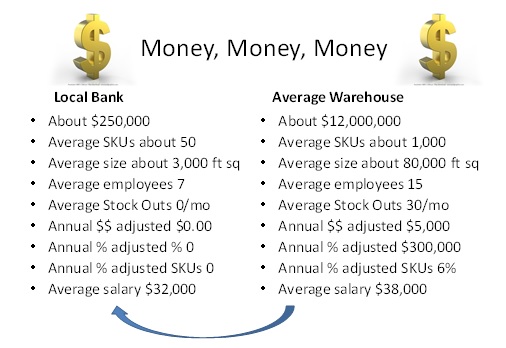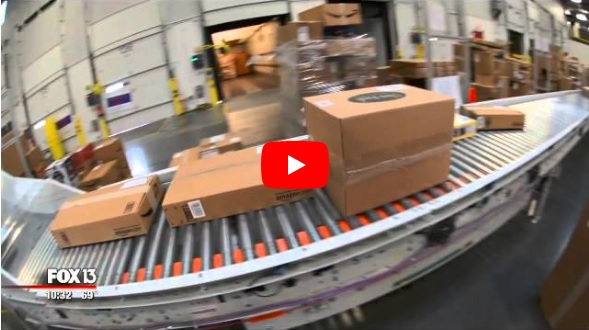Stock Rooms, Shipping, and Receiving

So many enterprises still believe that stockrooms, warehouses, shipping, and receiving are just a necessary evil rather than a value added process. This continues to be the case even after years of repeated negative inventory reductions, lost materials, and adversely affected jobs with delays for expedited reorders.
Well, I’m here to tell you, that if you follow the guidelines that I’ll set forth for you that 90% of your material problem will disappear! Believe it or not I guarantee it. Just like the commercial says “eat the food & loose the weight.”
Or better yet, think of the warehouse/shipping/receiving/inventory functions like a bank and the functions of a bank, because inventory management is money management.


So then, run Materials Management like a bank and your inventory related issues will disappear.
Don’t get me wrong this is not a magic bullet and it will require some changes, work, discipline, and some additional up front cost. However, the changes, work, and cost will have a payback that can be measured.
- Let’s begin with the organization, effective immediately. Shipping, receiving, warehousing, and inventory should report to a new position called Materials Manager. Just don’t put some tired old bonehead castoff into the position, but rather look for and interview all the young turks and the rebellious perfectionists in the organization (someone that’s levelheaded but with a backbone).
- Invest in his or her training (women make great Materials Managers) both in-house and out-house training. By that I mean seminars by organizations such as American Production Inventory Control Society (APICS), Institute for Supply Management (ISM), Warehousing Education Research Council (WERC) or at home courses like American Management Association (AMA). Don’t cheap out on education. It’s an investment that has a payback.
- Assist the new Materials Manager to establish separate and secure (that means LOCKED) warehouse, shipping, and receiving areas. As a compromise, an emergency access key might be available to the Production Manager with the conditions that it’s for emergency only (poor or lack of planning does not constitute an emergency). Any items removed from the warehouse must be documented and approved by the Production Manager. Security cameras should be installed.
- Areas within the warehouse, shipping, and receiving should be clearly marked, such as: to be Shipped, to be Received, and QA/Rejected Materials.
- A procedure manual should be prepared with details on the transactions required and authorized personnel that can move materials.
- Purchase Order number to be indicated by the supplier on all incoming goods.
- All incoming goods must be received and documented against the Purchase Order for correct quantities and description.
- All nonconforming goods must be segregated and kept secure until the nonconformity is accepted (in writing) and/or returned to the supplier (after supplier notification and return shipping fees are agreed upon).
- All goods received must be routed directly into the warehouse for acceptance, incrementing inventory, and a formal stock location should be established and documented.
- The Materials Management staff should be trained in all details to operate the various functions (Fork Lift Licenses, OSHA Training, Fire Training, etc).
- Investigate, negotiate, and implement an MRP system (not all MRP systems cost a fortune), but ensure the system you select does the following:
- Has discrete receiving, adjustment, decrementing, and incrementing transactions.
- Discrete quantities on requisition, on order, in stock, on back order, in incoming QA, and on reject/hold.
- Transaction indicating stock locations by SKU.
- Cycle counting as well as wall to wall inventory provisions.
So, why not try a sure fired way to eliminate the constant and reoccurring problem of eliminating lost inventory, delayed jobs due to missing materials, and costs of expedited reorders, and the not to be mentioned customer cost delay penalties.
Your path to business success.

